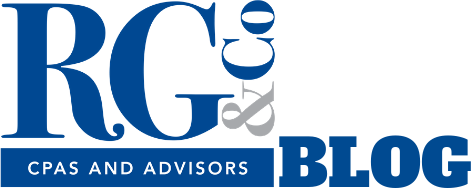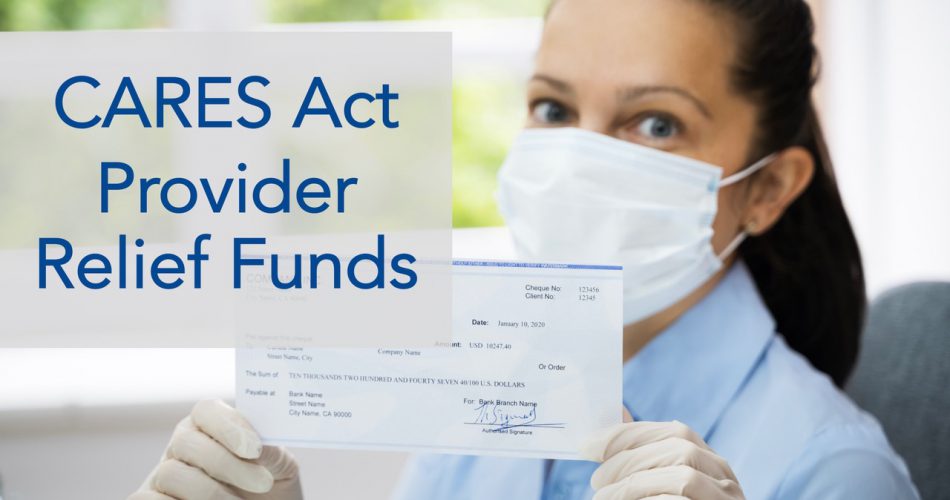UPDATE January 20, 2021: The U.S. Department of Health and Human Services (HHS) has announced that providers receiving Provider Relief Funds (PRF) will not have to report their use of grants by February 15. Additionally, year-end legislation signed in December modified the reporting process significantly enough that providers are expected to keep more of their funds. For updates on deadlines and reporting requirements, providers can access https://www.hhs.gov/coronavirus/cares-act-provider-relief-fund/reporting-auditing/index.html. RGCO will continue to post updates as they become available.
A Brief Recap
The Provider Relief Fund (PRF) portion of the CARES Act signed into law on March 27, 2020, was largely created to support healthcare providers in the battle against the COVID-19 outbreak. The United States Department of Health and Human Services (HHS) distributed billions of dollars to hospitals and healthcare providers on the front lines of the coronavirus response. Qualified providers of healthcare services and support received Provider Relief Fund payments for healthcare-related expenses or lost revenue due to COVID-19. The distributions were not designed to be repaid to the US government, assuming providers complied with defined terms and conditions. Distributions were made in several phases, with varying beneficiaries, including targeted distributions to highly impacted hospitals, rural providers, and skilled nursing facilities. Briefly, the distributions were as follows:
Phase 1- General Distribution (April 10)
HHS distributed $50 billion to providers who billed Medicare fee-for-service in order to provide financial relief during the COVID-19 pandemic. The funds were allocated proportionally to providers’ share of 2018 patient revenue. On April 10, 2020, HHS immediately distributed $30 billion to eligible providers throughout the American healthcare system.
Phase 2 – General Distribution (June 9)
HHS made available $18 billion in the Phase 2 General Distribution. Eligible providers included participants in state Medicaid/CHIP programs, Medicaid managed care plans, dentists, and certain Medicare providers, including those who missed the Phase 1 General Distribution payment, equal to 2% of their total patient care revenue or who had a change in ownership in 2019 or 2020. Assisted living facilities were also eligible to apply.
Phase 3 – General Distribution (Oct 1)
HHS made available $24.5 billion in new funding available for Phase 3 General Distribution allocation. Providers who had already received Provider Relief Fund payments were invited to apply for additional funding that considered financial losses and changes in operating expenses caused by the coronavirus. Previously ineligible providers, such as those who began practicing in 2020, were also invited to apply, and an expanded group of behavioral health providers also became eligible for relief payments.
Targeted Distributions
HHS additionally allocated targeted distribution funding to providers in areas particularly impacted by the COVID-19 outbreak, rural providers, and providers requesting reimbursement for the treatment of uninsured Americans.
Providers were largely unsure of how the distributions would be accounted for, with various bits of information shared via emails and public reporting. Finally, in December 2020, HHS made available the “Summary of Reporting Requirements for Recipients of the PRF,” which addressed reporting timelines and guidelines for providers receiving more than $10,000. The key dates and required actions indicated are as follows:
- Jan. 15, 2021: Reporting portal opens for providers.
- Feb. 15, 2021: First reporting deadline for all providers on use of PRF funds.
- July 31, 2021: Final reporting deadline for providers who did not fully expend PRF funds prior to December 31, 2020.
The guidelines for use of PRF funds included healthcare-related expenses attributable to coronavirus that are not reimbursed or obligated to be reimbursed from other sources, and lost revenues, up to the difference of 2019 and 2020 actual patient care revenues. The data elements for required reporting are stated as follows:
- Lost revenues:
- Revenue/net charges from patient care
- Revenue by patient care payor mix
- Expenses attributable to coronavirus:
- General and administrative (G&A) expenses
- Healthcare-related expenses
- Additional expense reporting for providers receiving more than $500,000 in aggregate PRF payments.
Additionally, providers receiving in aggregate greater than $750,000 of these funds and other certain HHS funding programs are subject to Federal Audit procedures under the OMB Uniform Guidance (Single Audit Act) and/or Government Auditing Standards, covering recipients of grants provided by Federal sources. The audits will be due nine months following an entity’s fiscal year end.
This summary is not meant to be all inclusive in assisting providers receiving PRF in 2020. We encourage you to visit the PRF website for complete reporting guidance and details as well as FAQs and other program information. The information and guidelines continue to be fluid and providers should communicate with their CPAs to verify the data and reporting requirements.
Rivero Gordimer & Company has a long history in providing audit services under the OMB Uniform Guidance prior to the CARES Act. Along with our Health Care Industry Committee members, who are well versed in dealing with many of the various providers, we are well positioned to assist with the PRF reporting responsibilities.
Please direct any questions to Stephen G. Douglas, CPA and Shareholder, Audit Team, or Rene J. Zarate, CPA•ABV, Director, Valuation & Advisory at (813)875-7774.




